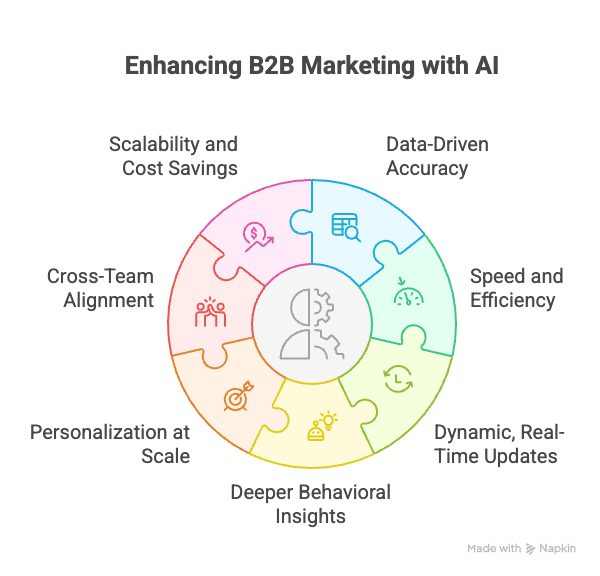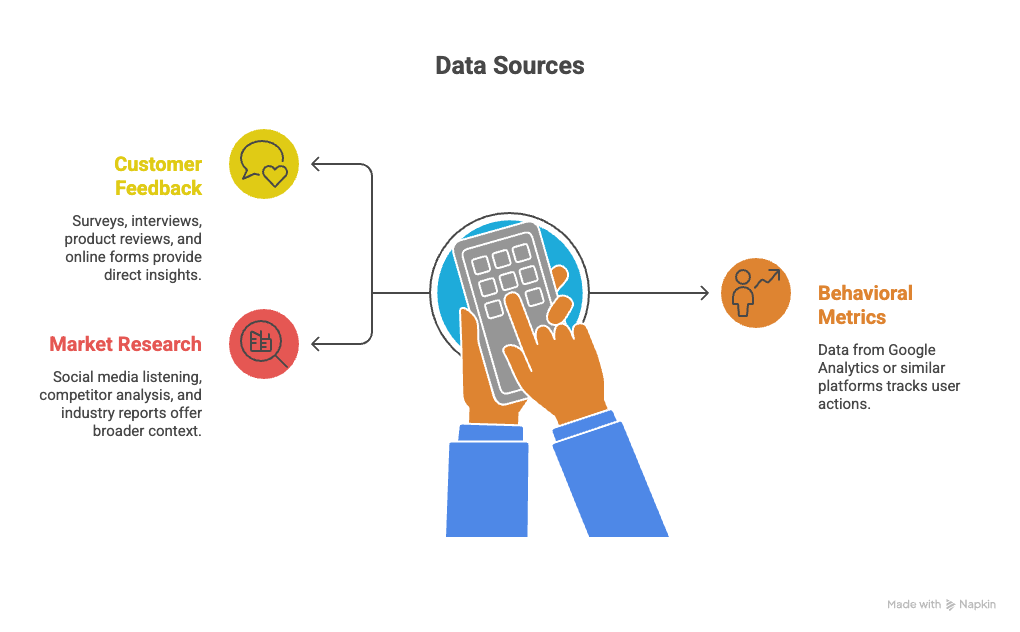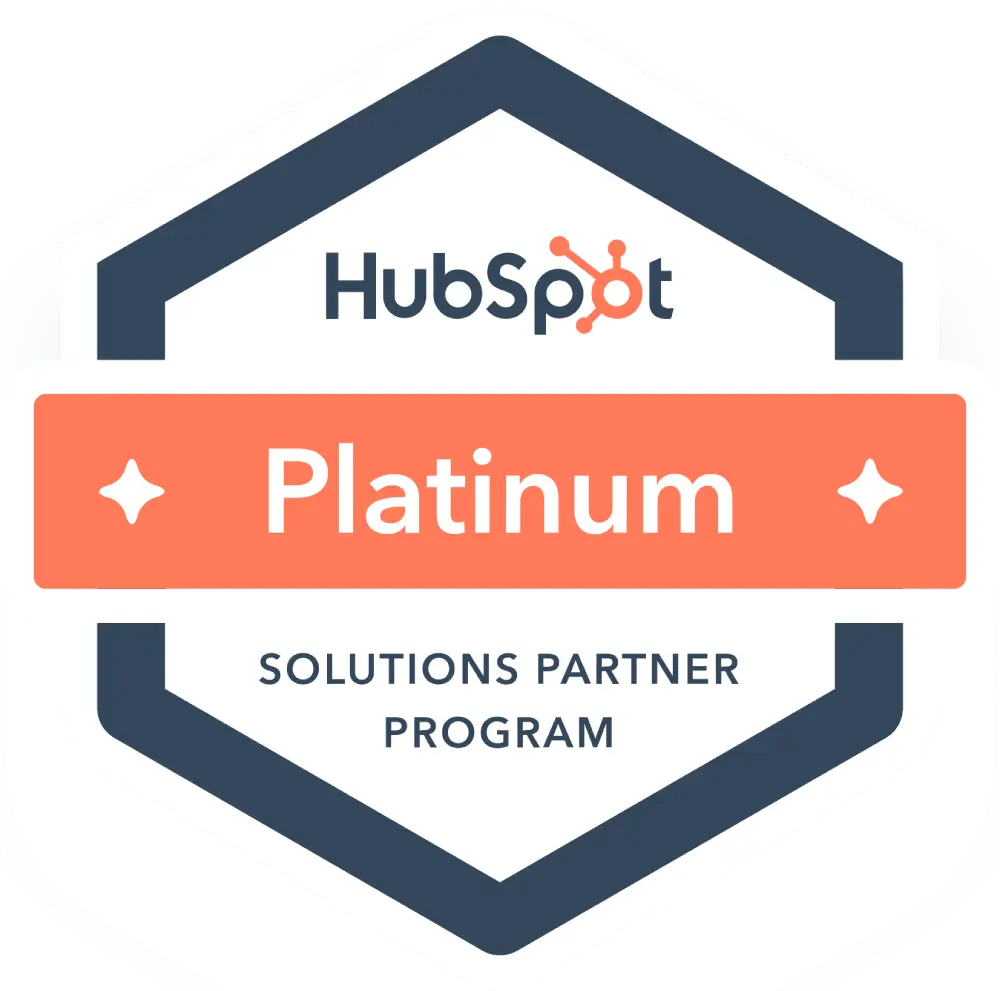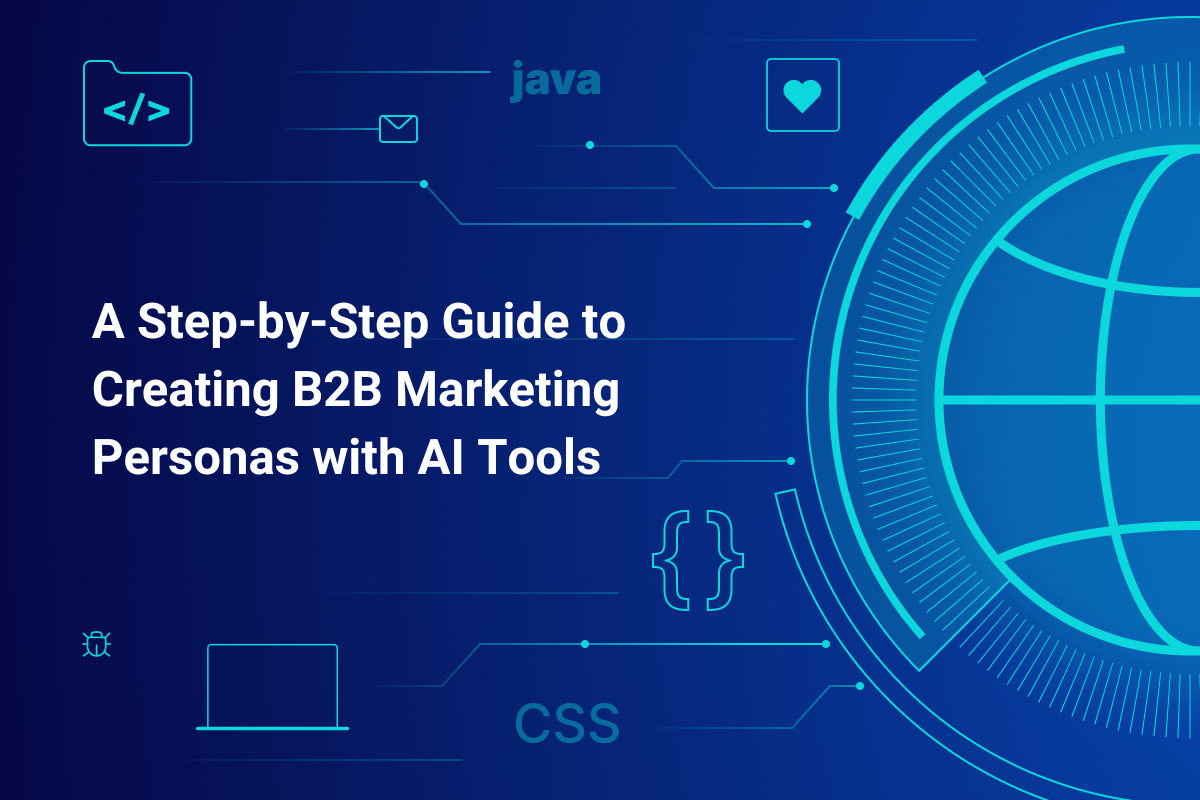B2B marketing is notorious for its long sales cycles; it can feel like playing chess where your opponent takes weeks between moves. Unlike B2C, where marketers get rapid feedback from a steady stream of customers, B2B teams often have to wait months to understand if their messaging is resonating.
That’s why buyer personas have long been a cornerstone of B2B strategy. They help ground campaigns in the realities of customer needs instead of relying on guesswork. In fact, companies that excel at persona-driven lead nurturing generate 50% more sales-ready leads at 33% lower cost.
Traditional persona building is often a time-intensive and subjective process. This is where AI changes the dynamic. AI tools leverage big data, taking some of the common pitfalls of human subjectivity out of the picture. With AI tools in the hands of knowledgeable operators, the chances of a “fairy tale ending” for your next B2B marketing campaign just got a whole lot better.
What is a B2B Marketing Persona?
A marketing persona is a made-up character based on the demographics and interests of a particular target audience segment. Instead of aiming your marketing pitch at an abstract collection of data, personas allow you to build a strategy with real customers in mind. For example, you might target the CISO or DevSecOps leads of a certain company size or industry.
Traditionally, building these personas requires hours of interviews, surveys, and analysis by marketers—time-consuming work that’s often limited by the scope of research and human bias. AI changes this equation. With the right prompts and datasets, AI can generate high-quality, data-driven personas in minutes, work that would take a human team days or weeks.
Beyond speed, AI can also connect goals, motivations, and behaviors into a more coherent, realistic picture of your buyers. Sometimes, you can even “converse” with AI-generated personas to uncover buying habits and purchasing triggers, turning static profiles into dynamic strategic tools.
What are the Benefits of Using AI Tools to Create B2B Marketing Personas?
AI personas come with several advantages over static personas created through traditional methods. Here are the most significant:
Creation is much faster. AI marketing tools can generate detailed personas with complex biographies and work histories within minutes.
Personas are powered by data, not opinions. Every marketer has theories about which buyer segments will be most engaged, but AI has something stronger: data. Instead of relying on guesswork or limited-scope research, AI tools can analyze vast datasets to improve accuracy and consistency.
That said, the quality of the output depends heavily on the quality of the input. Feeding AI the right, representative data is key—it ensures the system can interpret patterns correctly and helps minimize model bias. When done well, this gives you personas that reflect your real buyers, not internal assumptions.
AI personas are scalable. With AI accelerating the creation process, you can easily spawn unique personas for as many different audience segments as you need to address, share them across teams, and update them with new data as often as you want. AI personas aren’t just useful for campaign messaging; they also make your SEO strategy sharper. By mapping content directly to the search behavior and decision criteria of each persona, you can improve visibility and attract more qualified traffic.

How Do AI Tools Help Create Marketing Personas?
At heart, a customer persona is just a list of attributes. AI tools can create customer personas by training them on relevant datasets and giving them appropriate prompts.
AI can handle complex data crunching in seconds, but its accuracy depends on the quality of the data and the prompts it’s given. Without a structured process to refine outputs into realistic buyer profiles, you risk creating personas that don’t match your actual customers and end up guiding campaigns in the wrong direction.
The step-by-step process we’ll outline next will help you avoid that pitfall and create AI personas that your real buyers would find recognizable and relatable.

How to Create B2B Marketing Personas with AI Tools
Before you can start creating personas, you need to ensure your AI tools are drawing on reliable data sources. Good inputs include:
- Direct customer feedback — surveys, interviews, product reviews, and online forms.
- Behavioral metrics — data from Google Analytics or similar platforms.
- Market research — social media listening, competitor analysis, and industry reports.
If you’re building personas at scale, it’s worth creating a dedicated AI agent specifically for persona generation. This allows you to continuously feed updated data and refine results over time. If you’re only producing a handful of personas, the prompts below will be enough to guide the process effectively. With a solid data foundation in place, you can train your AI and ask the right questions that shape accurate, useful customer personas.
1. Premise Prompt
Your first step is to provide your AI tool with a prompt that defines the premise for the customer persona you want to create. With this prompt, you’ll establish basic details like the persona’s industry, company size, role within their organization, seniority level, and location. We also want to get at the persona’s goals, challenges, pain points, and the KPIs they care about the most. We can provide some of this information, or we can ask the AI to suggest it to us.
If you’re using ChatGPT or a similar tool, you might pose a question like, “Create a B2B buyer persona for an executive at a mid-size cybersecurity firm. Include personal demographics, professional goals, challenges, and current software preferences.”
The tool might respond with something like, “Here’s CTO Mary, 39, fifteen years of experience in the tech industry, trying hard to help her company scale up and meet the evolving challenges of the current threat landscape…” and so on, and you’ve got something to build on.
2. Deliverable Prompt
The next step is to develop your persona further in terms of the behaviors and motivations relevant to your marketing campaign’s deliverable objectives. You should ask questions that bring their motivations into clearer focus and outline the activities that make up their purchasing process. You can ask where they research software purchases, what their purchasing triggers are, and what their common objections and deal-breakers are.
Going further, you can get into the granular details of their device usage and browsing habits, and broaden your inquiry to account for other organizational influences on their decision-making process, such as their own degree of authority, the other stakeholders involved in making a decision, and key purchasing criteria.
You could ask, “Expand this persona by detailing their buying behaviors and motivations. Where do they typically research software purchases (e.g., industry forums, analyst reports, peer recommendations)? What triggers their interest in exploring new solutions? What common objections or deal-breakers might prevent them from moving forward? Include the decision-making process within their organization, the stakeholders involved, and their top 3 purchasing criteria.”
3. Fine-Tuning Prompt
The last step is to take the persona created by the AI, make any additional adjustments that might be needed, and add the final details and cultural layers that will make it easier to work with your persona and treat it like a “human” for strategizing purposes. For example:
- Name
- Profile photo and/or avatar
- Personality traits, values, aspirations
- Work style
- One-page persona summary
- Messaging cues
Further adjustments can be made over time, after testing the persona in live marketing campaigns and taking feedback from real customers into account. A persona that doesn’t align with the people who are actually buying your product needs to go back to the AI toolshed for revision.
Example: “Refine this B2B buyer persona by giving it a realistic name, personality traits, and professional values. Create a short backstory that reflects their career path and aspirations. Summarize their work style, communication preferences, and the key factors that influence their purchasing decisions. Present the output as a one-page persona profile, including a suggested profile photo/avatar, a concise bio, and messaging cues that would resonate most with them.”
What Can an AI Marketing Persona Do?
You can do a lot more with an AI-generated persona than just hold it in your thoughts while you think up marketing strategies. Personas can be shared among multiple team members, placed into different virtual scenarios, engaged in “conversation,” and adjusted to reflect changing goals and new insights into your market and customer base.
AI personas can be put to excellent use in other marketing projects, such as creating customer journey maps. This helps you anticipate the steps your prospect will take to research their purchase and determine the content and messaging that will be most likely to keep them moving closer to a final decision in your favor.
For example, you could prompt the tool with, “Tell me the steps CTO Mary will take before downloading a product demo,” and gain insights into what channels and content media will be most likely to get her attention and give her the information she needs to take the next step.
Are There Any Risks to Watch Out for with AI Marketing Personas?
Expecting any still-evolving technology to carry you effortlessly to revenue growth is never a safe bet, and uncovering the benefits and untapped potential of AI requires navigating some of its hazards. Here are two of the most important things to keep in mind as you integrate AI tools into your marketing stack:
Finding the fine line between insight and hallucination. If you give your AI tool prompts for a persona, it’s likely to roll with them instead of stopping you and making sure you’re still keeping things plausible. It’s not hard for a persona to accumulate inconsistent characteristics that pull it away from modeling realistic behaviors.
Even with careful prompting, AI personas can be misleading, especially when they haven’t yet been trained on data generated by actual interactions between your brand and its human customers. During pre-launch phases, it’s especially important to incorporate human research and interviews rather than relying too heavily on AI to substitute for firsthand knowledge and experience.
Respecting personal data and intellectual property. AI users should always be mindful of where their data is coming from and whether it contains sensitive personal information. Safe and ethical data handling is essential for maintaining integrity and a positive brand reputation, and efforts to review and validate data along these lines can also help you filter out biases and inaccuracies.
The Perfect Buyer Persona is Out There. AI Tools Can Help You Find it.
Humans are inventive, but when faced with complex data, we often fall back on assumptions. AI changes that—helping you build personas that closely mirror the real buyers most likely to convert.
Creating accurate customer personas will always be a challenge in B2B marketing, but AI is turning it from guesswork into a repeatable process. With the right data and human intelligence guiding the prompts, you can move beyond static, two-dimensional profiles and develop personas that fuel smarter campaigns, stronger messaging, and measurable pipeline growth.
If you’re at the start of your ICP identification journey or looking to integrate AI-driven personas into your B2B growth strategy, book a free consultation with mvpGrow today.

The Founder & Chief Getting Sh%T Done Officer of mvpGrow. After about 8 years as a hired hand some of the largest (and smallest) B2B SaaS companies worldwide I decided to hang up my employee slippers and lace up my growth agency cleats. But just because I’m an agency doesn’t mean we can’t chat (no charge). Please email me on any topic and I will gladly reply: eyal@mvpgrow.com

